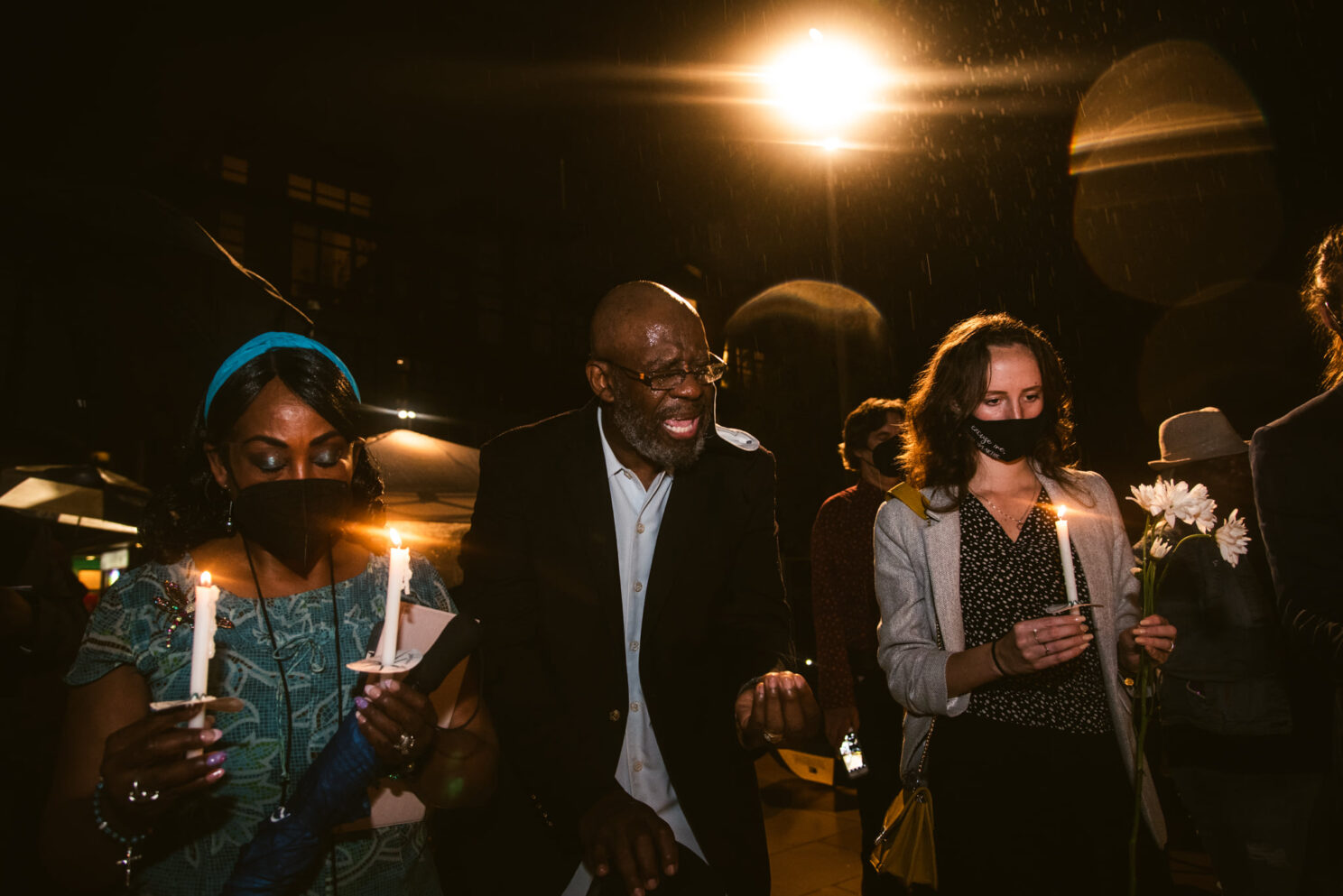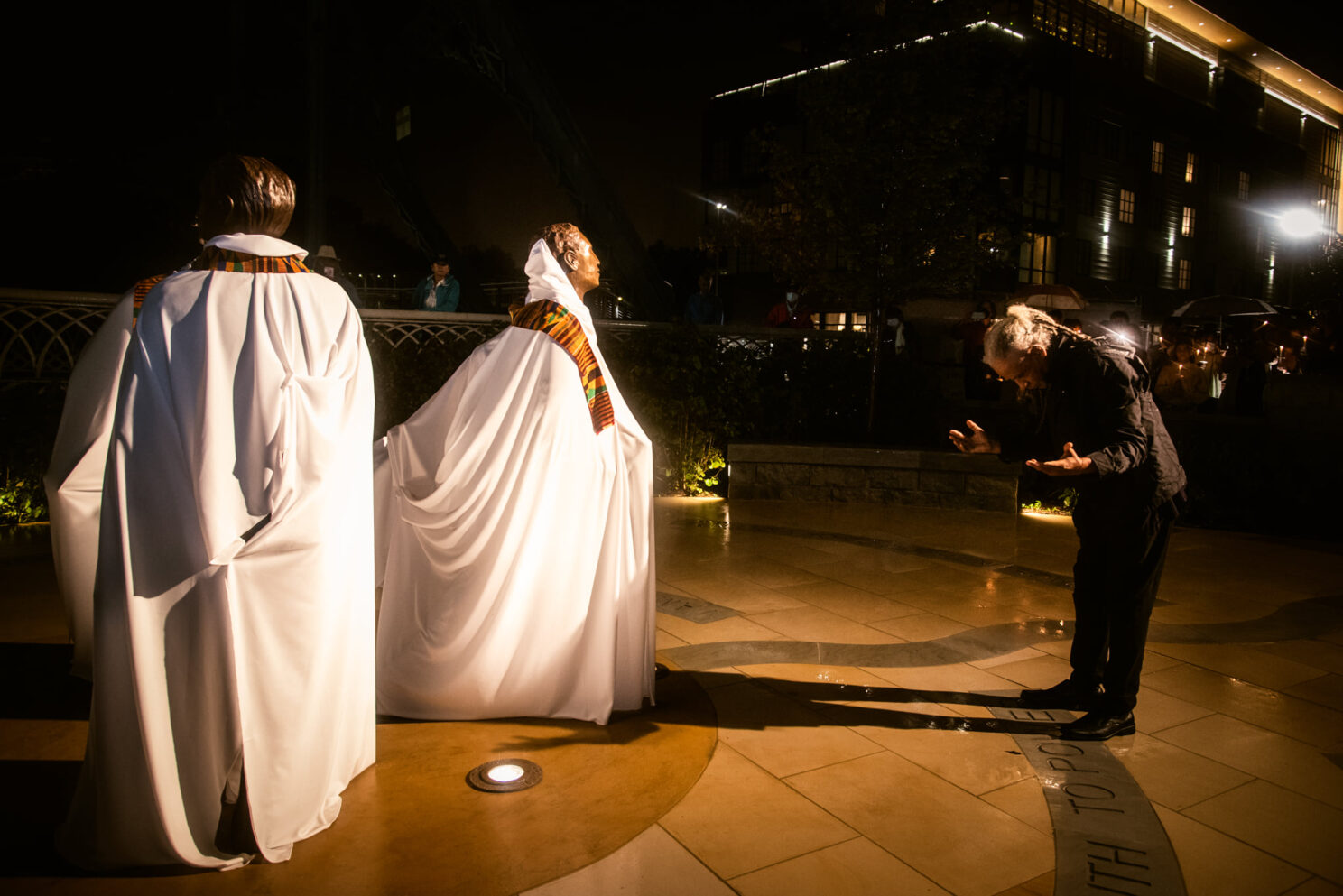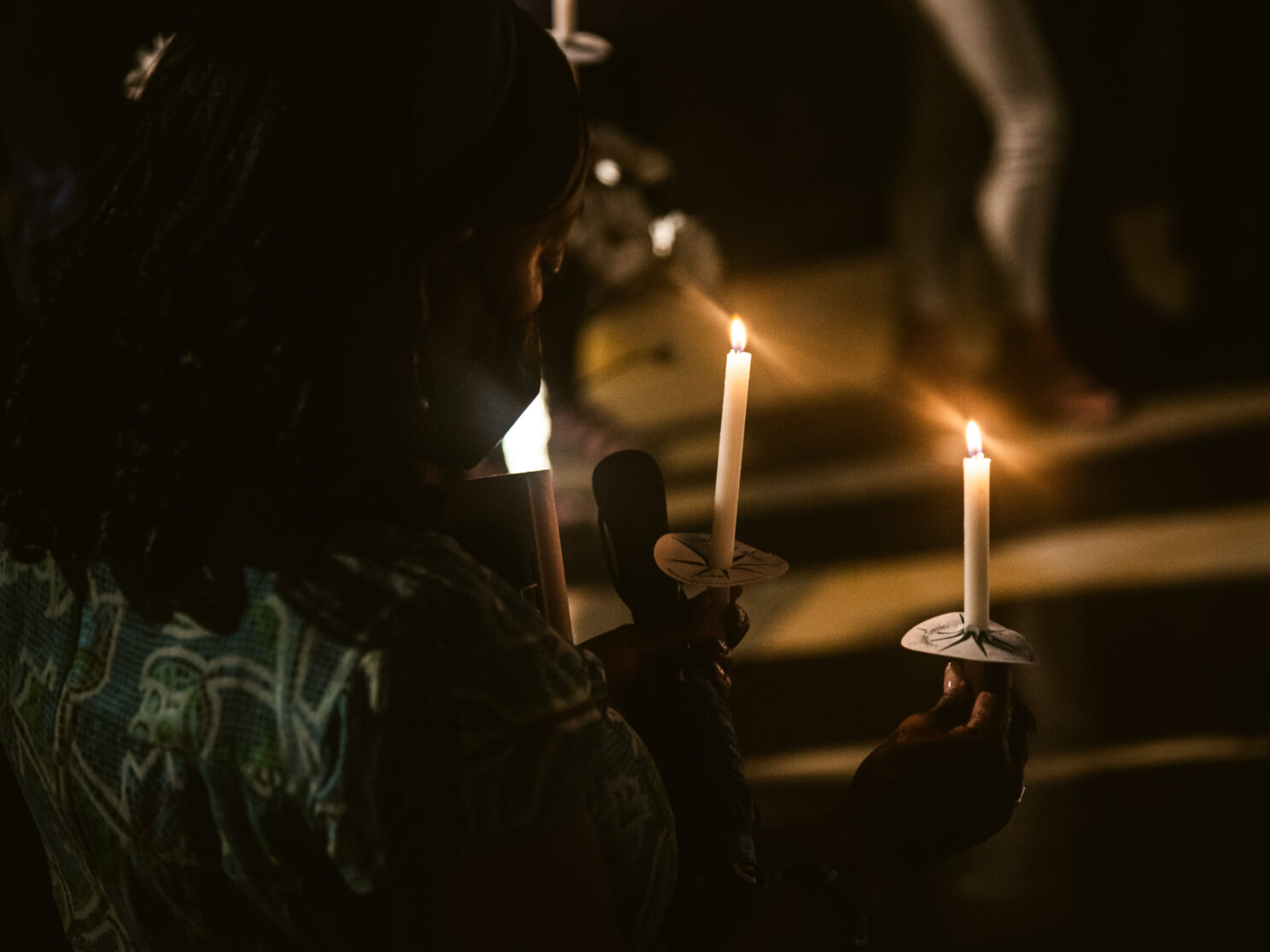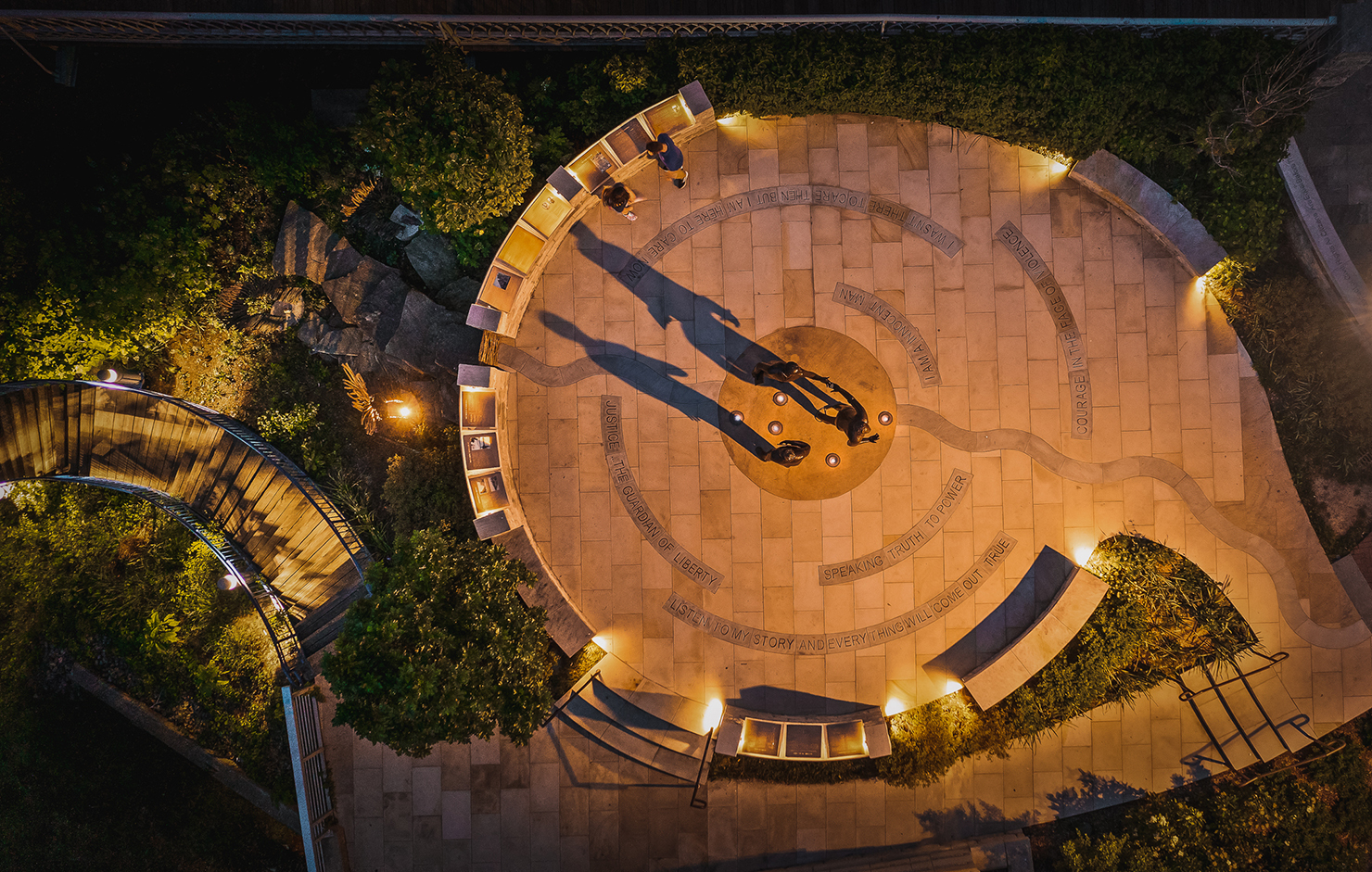Ed Johnson Memorial
The Ed Johnson Memorial commemorates a tragic but inspiring story of unjust death, courageous advocacy, and judicial precedent in the long struggle for civil rights in America.
“God bless you all – I am a Innocent man.” Ed Johnson spoke these last words before being mob-lynched from the second span of Chattanooga’s Walnut Street Bridge, his body riddled with bullets. The African American man was wrongly convicted of raping a white woman and sentenced to death until attorneys Noah Parden and Styles Hutchins courageously risked their lives fighting for his right to a fair trial and justice. The US Supreme Court agreed to hear an appeal of his case and granted a stay of execution. Ultimately, an angry mob defied court orders by storming the jail and taking Ed Johnson’s life.

Remembrance, Reconciliation, Healing.
The Ed Johnson Project Committee aimed to create a public commemorative site near the historic Walnut Street Bridge where Ed Johnson was lynched on March 19, 1906. Following an international design competition, the Committee selected the lead artist/landscape architect team of MeadowLark Studio and Ross/Fowler to design a welcoming space that recognizes Johnson’s story, honors his African American attorneys’ groundbreaking efforts, commemorates the Supreme Court case’s impact on civil rights, and fosters racial healing and reconciliation in Chattanooga.
At a nexus of pedestrian corridors in the heart of the city, the 2,400-sf site abuts the Bridge’s south end and is constrained by condominiums to the west and Walnut Plaza to the south. A stair winds down the northern slope to the Tennessee Riverwalk. The winning design concept creates distinct yet cohesive areas – a pedestrian circulation path, an accessible memorial plaza, and a sculptural hillside element – centered on Jerome Meadows’ original sculptures to integrate a contemplative space into the challenging urban fabric.
Inspired by the Thankful Memorial Church, which Johnson helped build as a stonemason, a refined palette of locally sourced quartzite stone with bronze accents keeps the focus of the Memorial on the story and art.
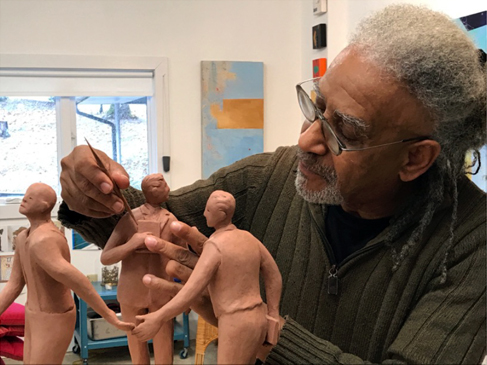



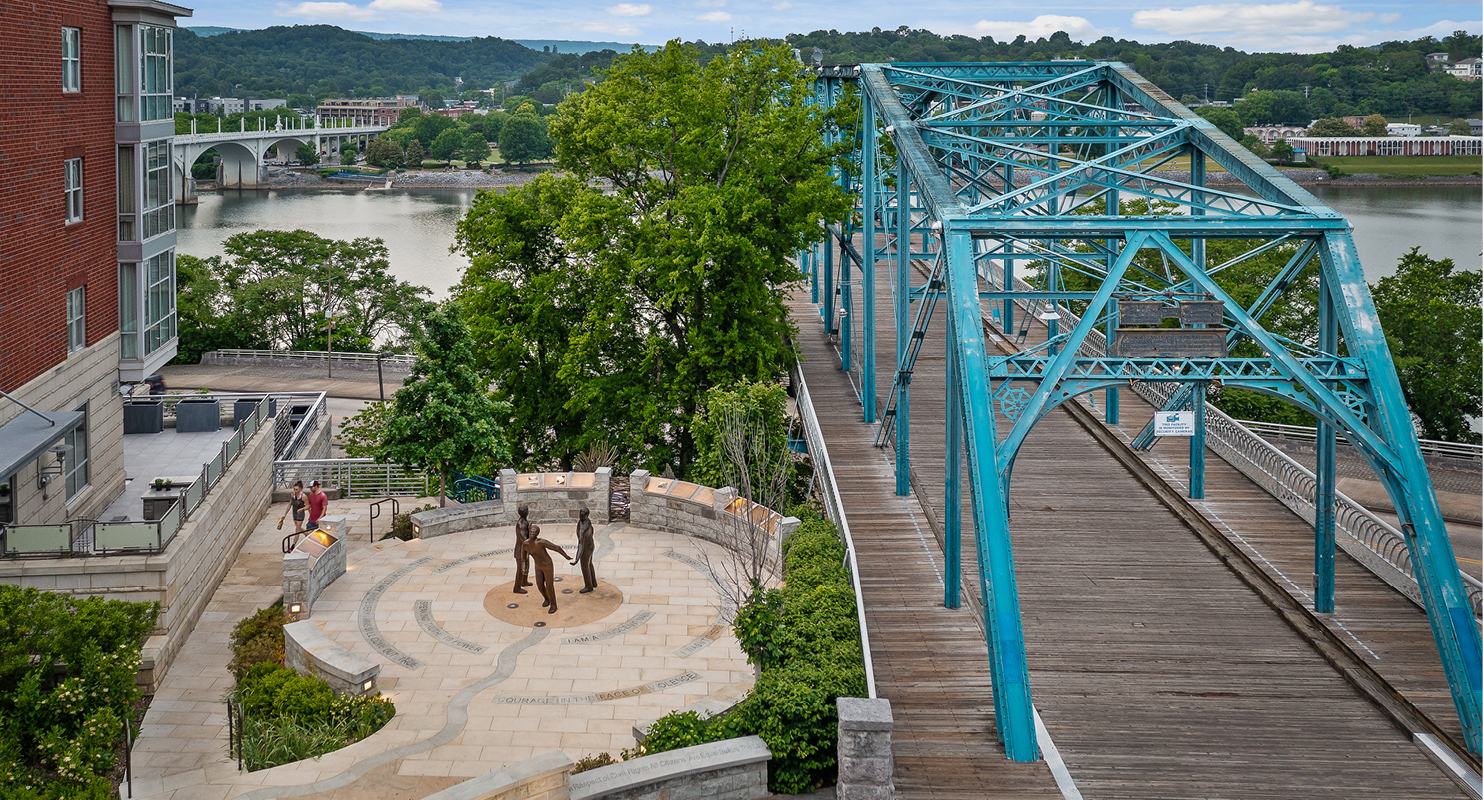
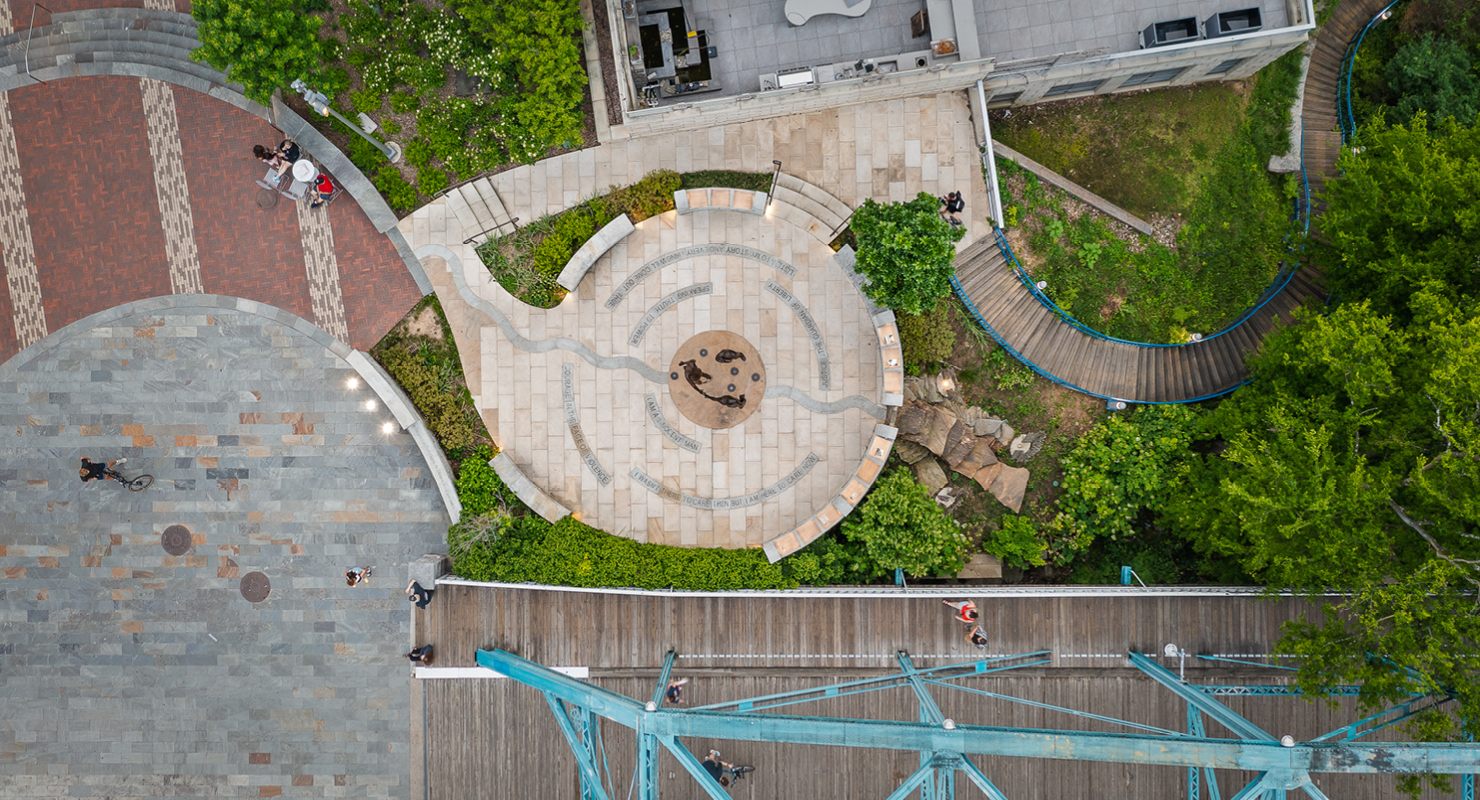
The Memorial welcomes visitors with a low curved sign wall that accentuates the geometry of the adjacent Walnut Plaza. A stone path connects to the Riverwalk stair while the Stream of Time leads visitors into the accessible memorial plaza. Separating circulation makes entering the plaza an intentional choice that preserves the solemnity of the space and signifies that it is more than just a passage.
Storytelling walls, seat walls, and lush plantings enfold the plaza, which centers around the Circle of Courage and Compassion. Atop a 10’ solid stone disk, three life-size bronze figures representing Ed Johnson, Noah Parden and Styles Hutchins stand such that visitors can take up positions among them.
Stone walls with bronze plaques washed in soft light impart the historical narrative and share local students’ poems from workshops conducted by the lead artist. A gap in the walls aligned to the second span acts as a metaphorical window with bronze artfully woven across for safety.
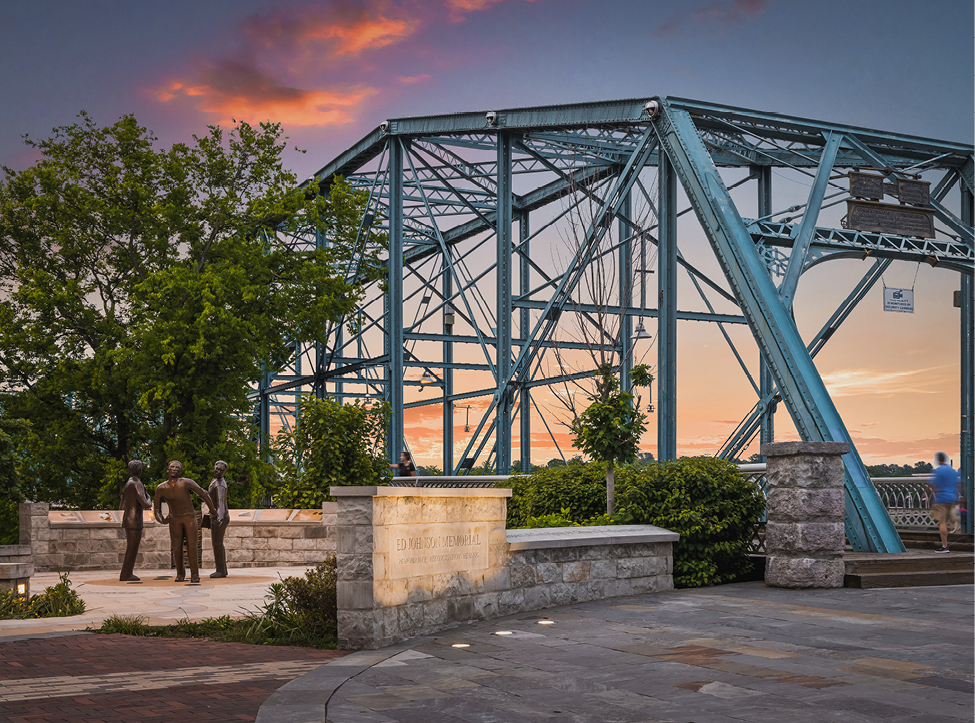
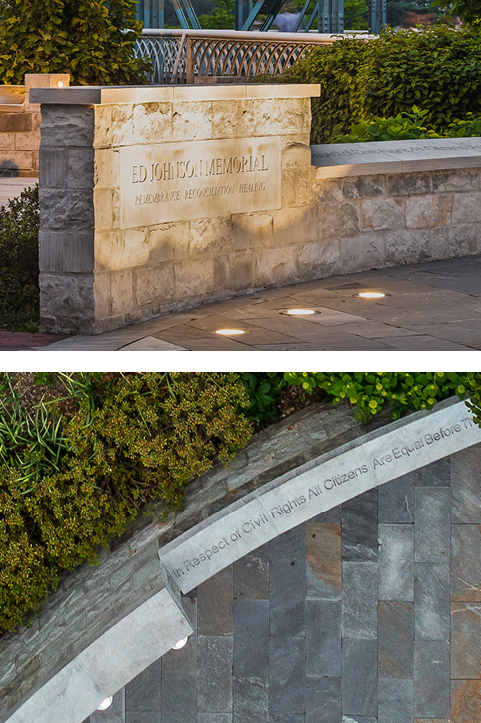
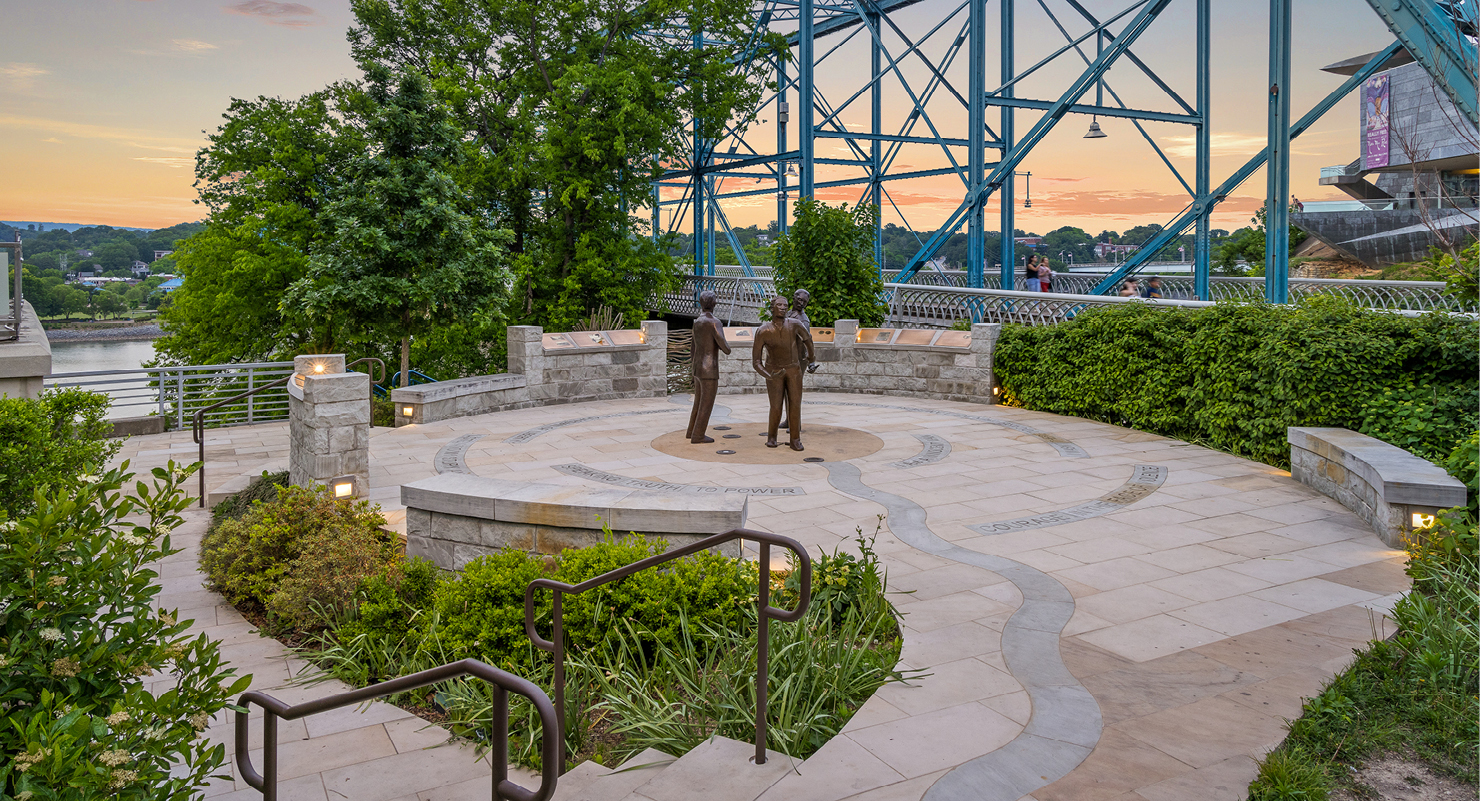
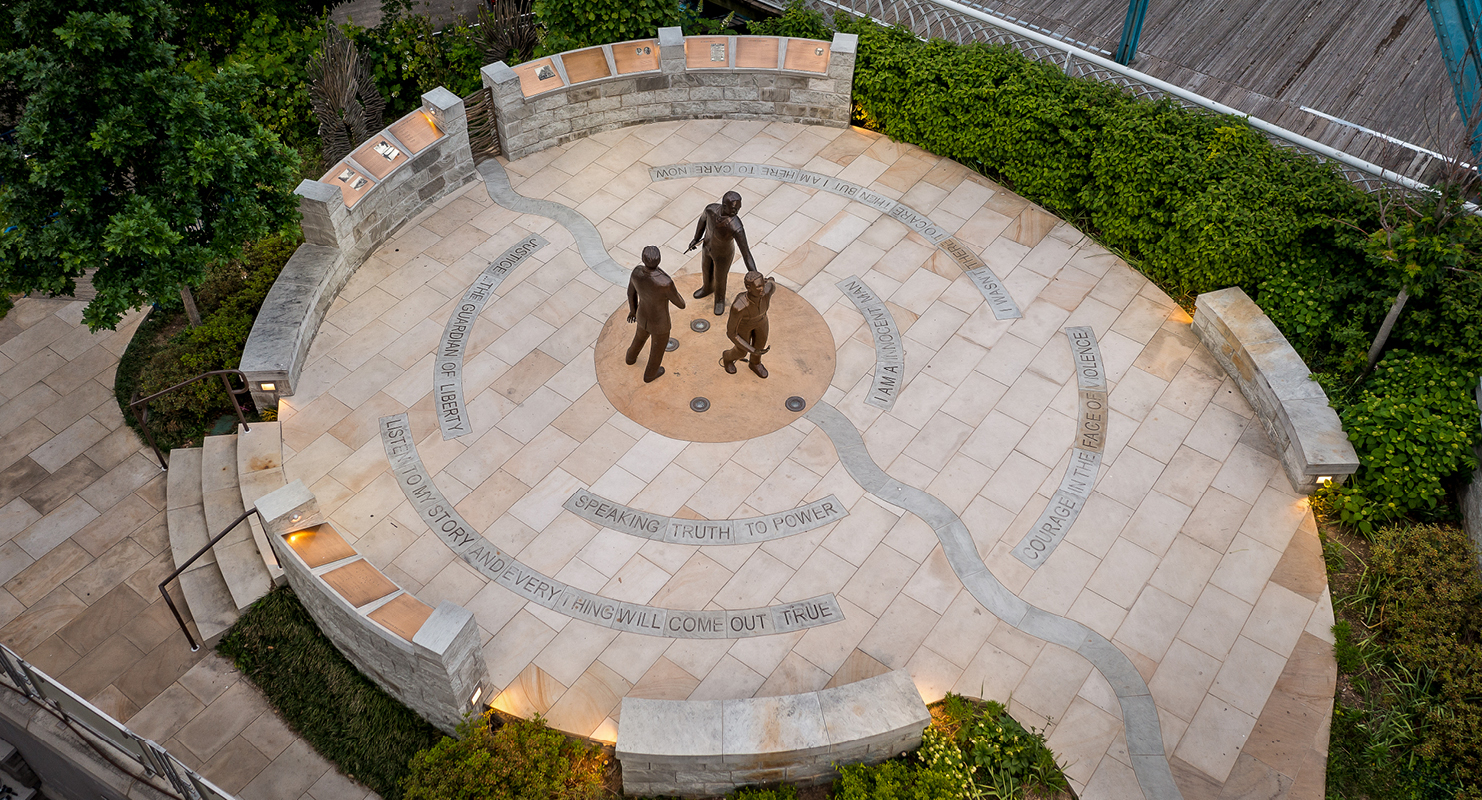
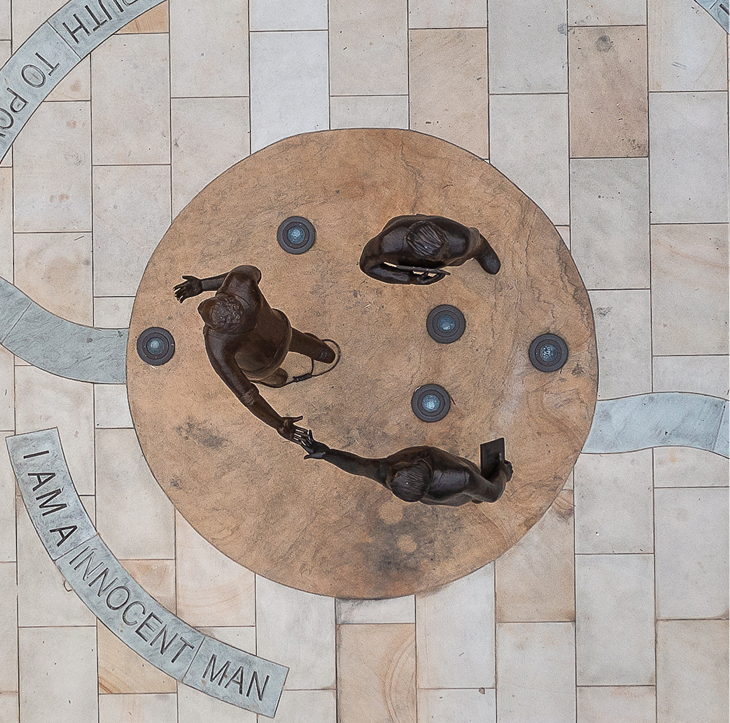

“The jury was really moved by this submission. What a powerful project. The jury noted this one did it right, and has it all; excellent details, materials, lighting, planting, circulation, and a great narrative and story for visitors. Overall, an excellent submission. Great work!”
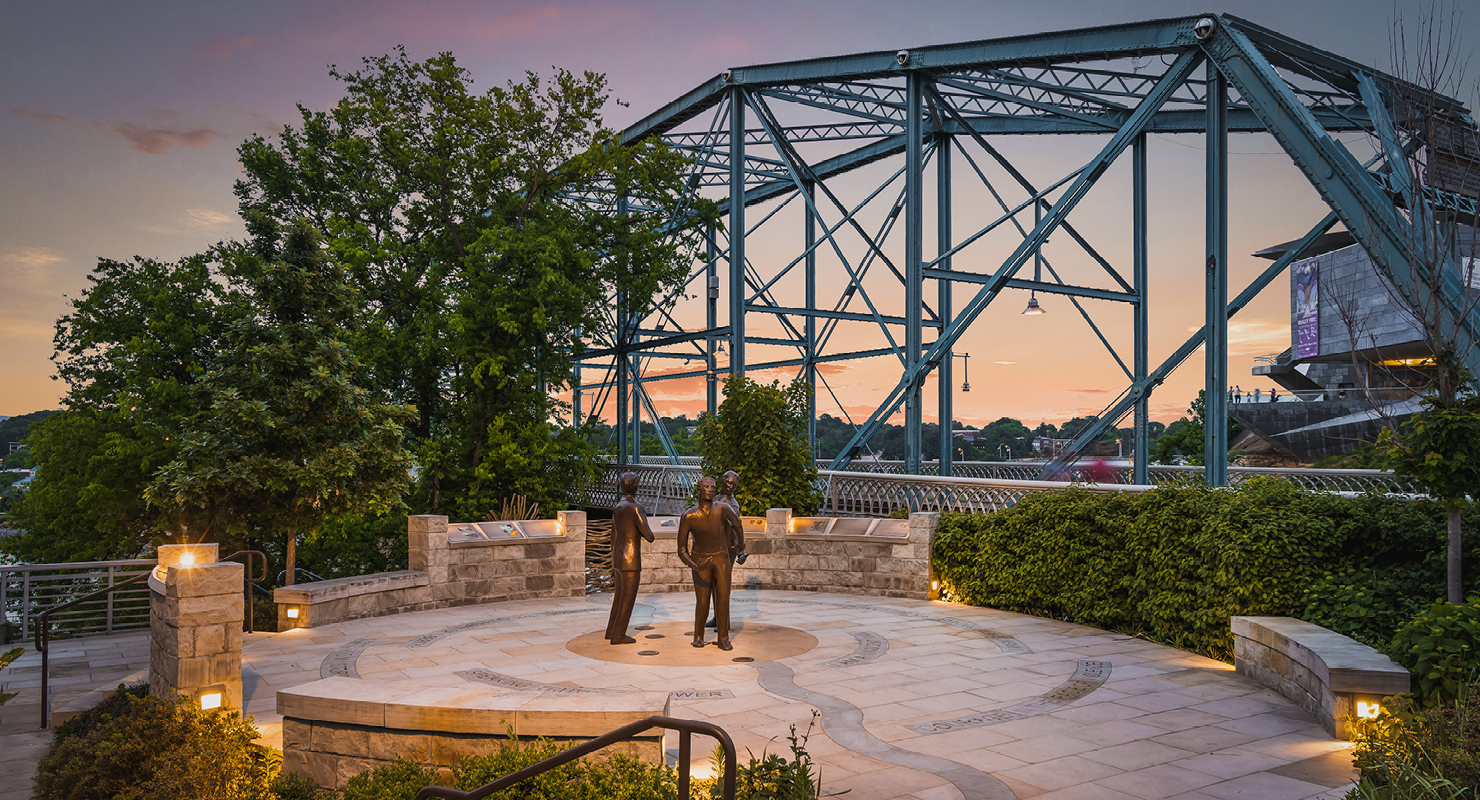
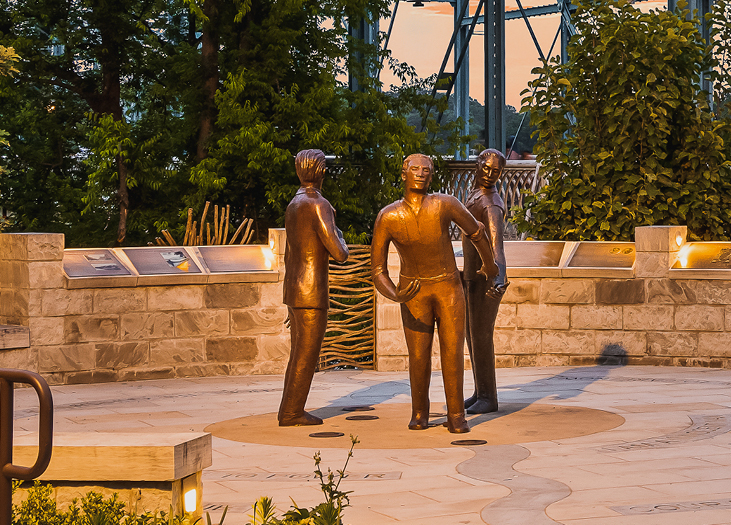


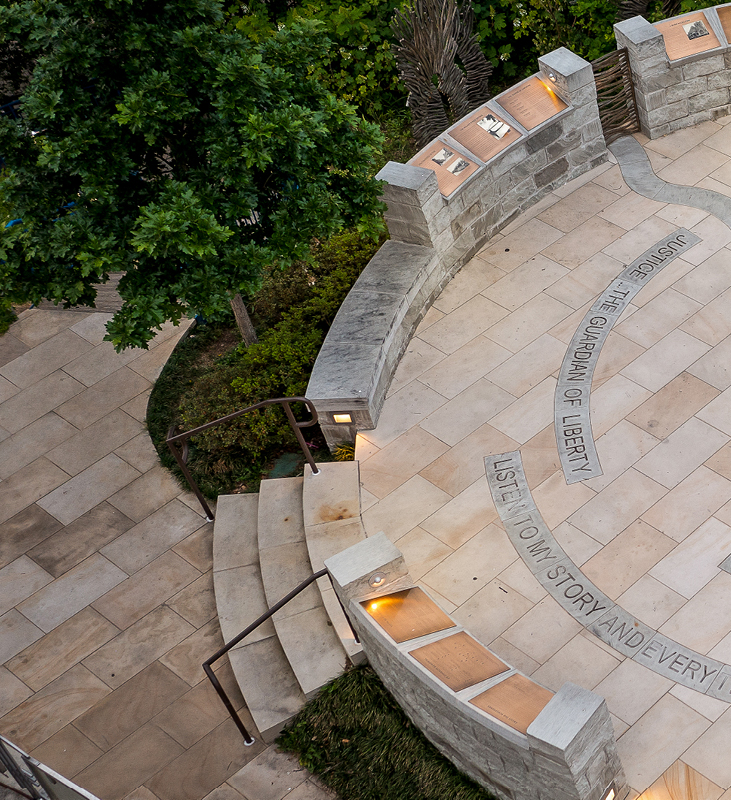
The Stream of Time stone inlay flows through the plaza and “window” into a cascading stone and sculptural element that extends the memorial downslope, connecting present day with the well-defined story of Ed Johnson, the lesser-known stories of earlier victims, and the untold stories of countless injustices over time.
Those as yet Unsung represents other local lynching victims Alfred Blount, Charles Brown, and Charles Williams as three illuminated semi-abstract bronze figures rising from the stones as they organically descend the slope toward the river and dissipate into the surrounding landscape.
Lenten Roses, hand dug from a Committee Member’s family land, are planted on site along with species offering seasonal interest and blooms during the March anniversary of the 1906 lynching.
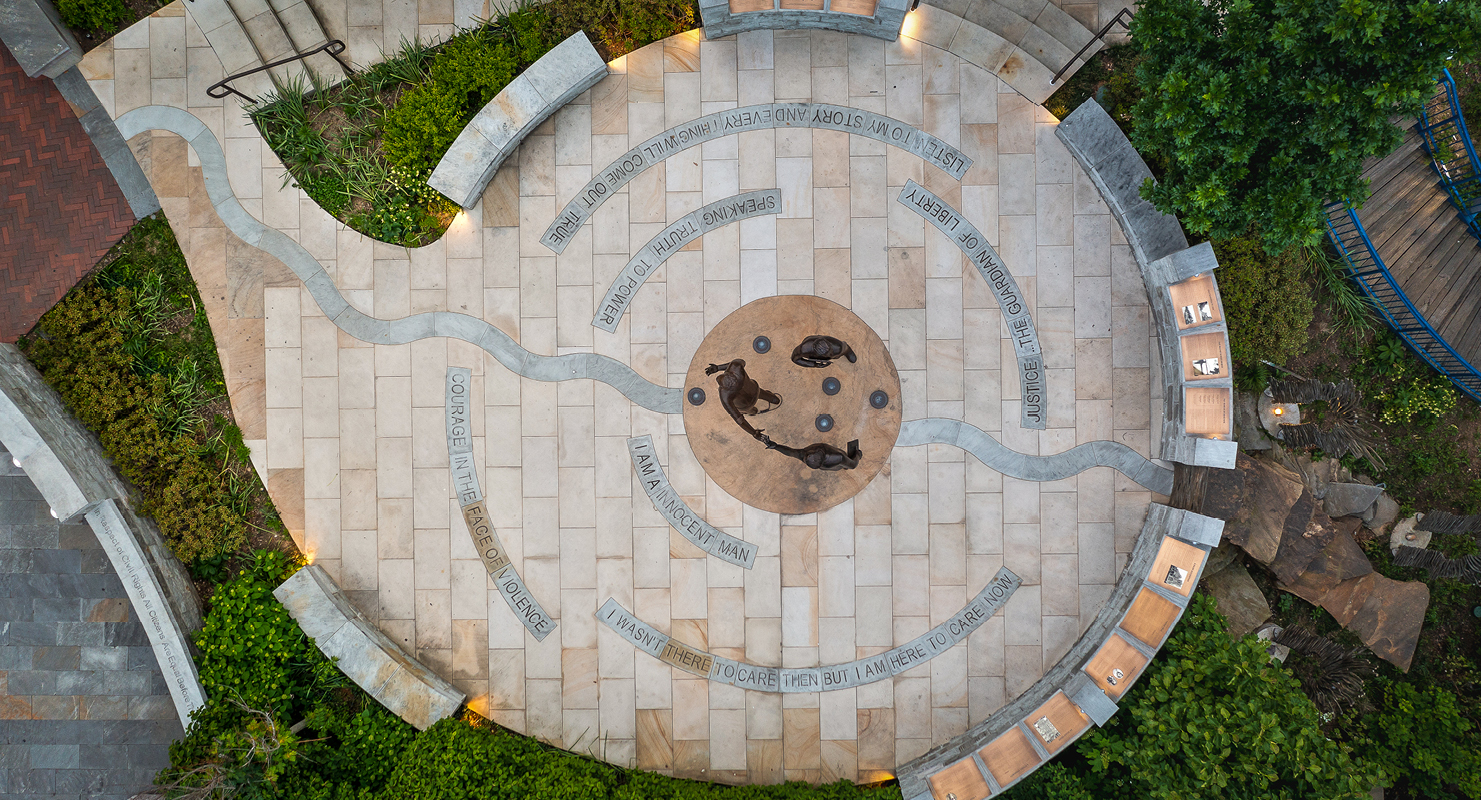
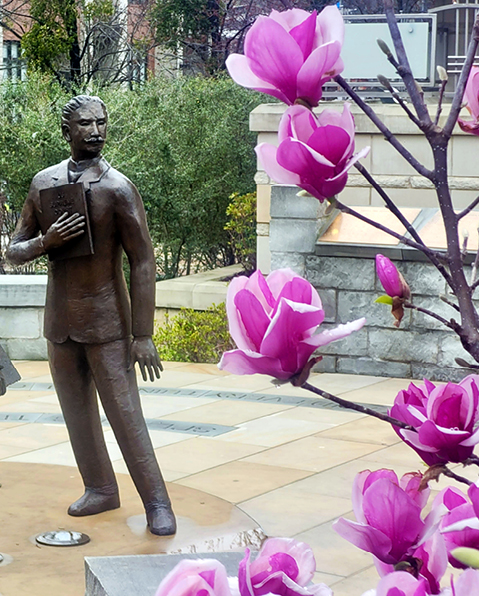
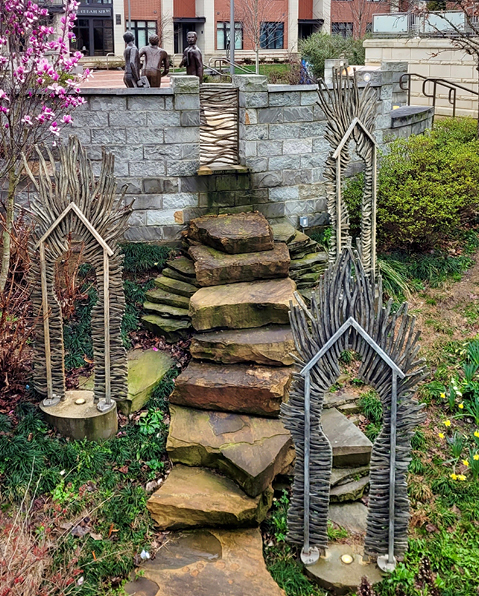
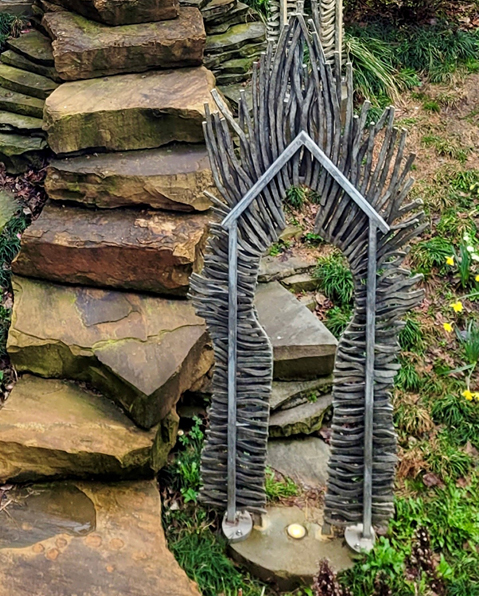
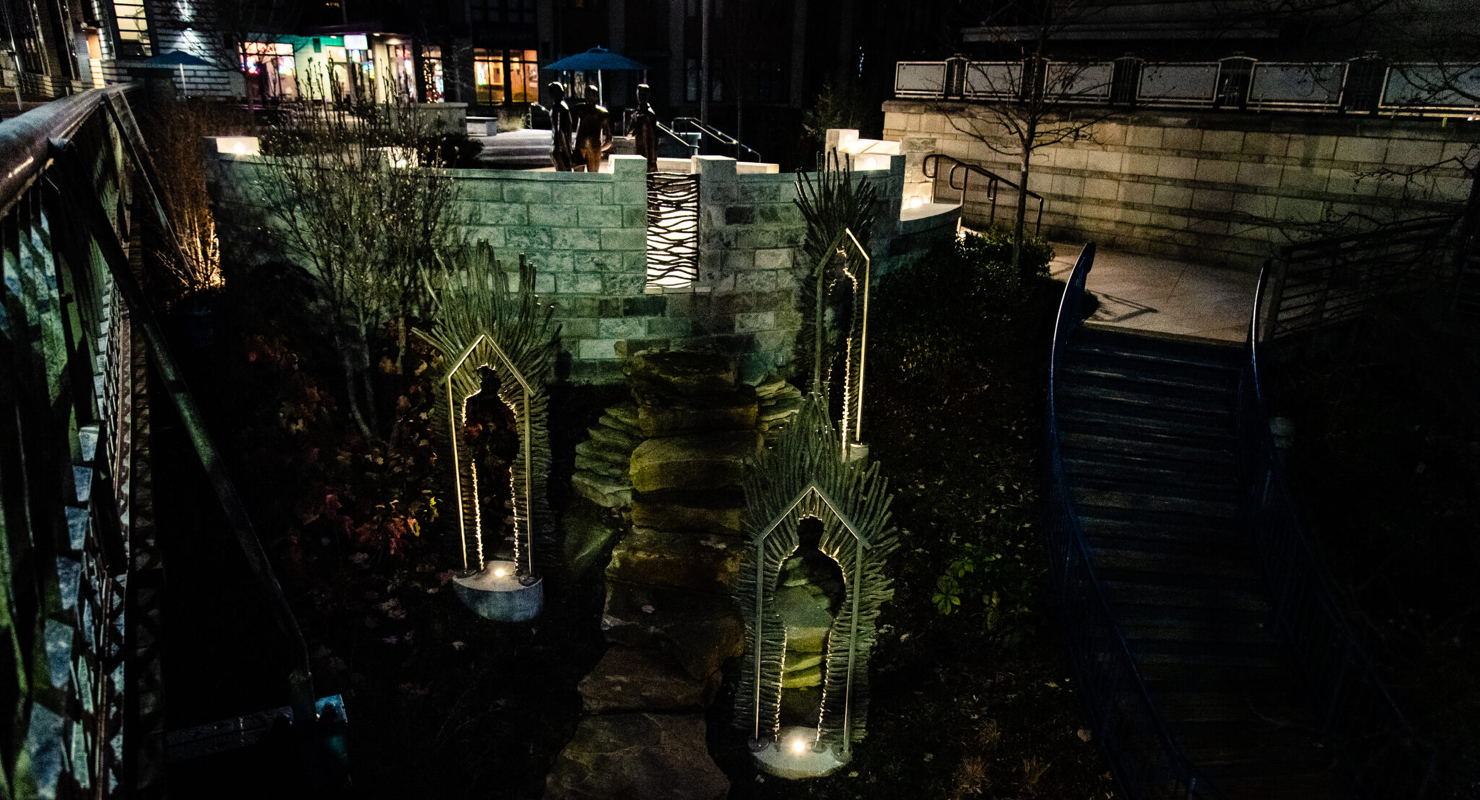
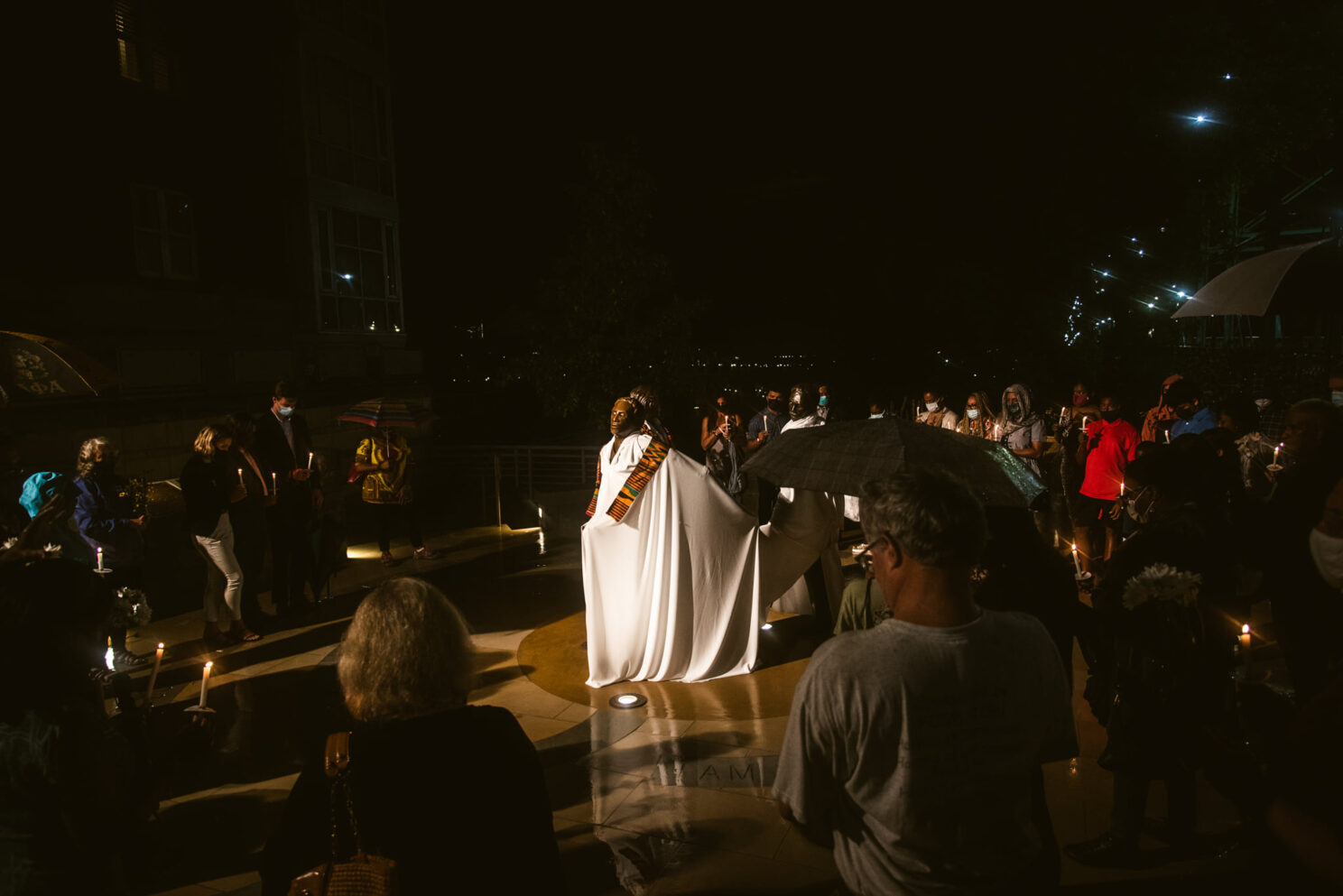
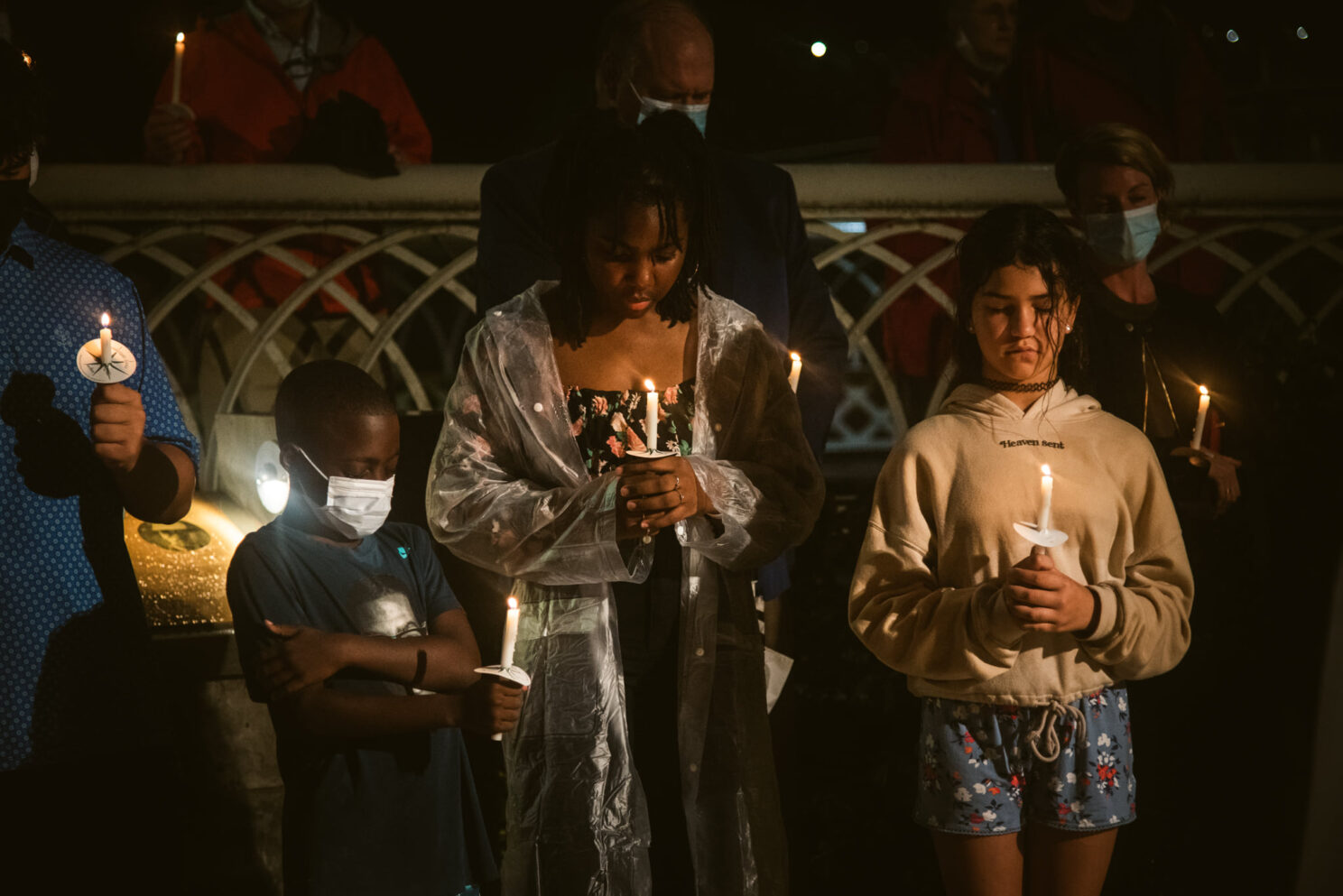
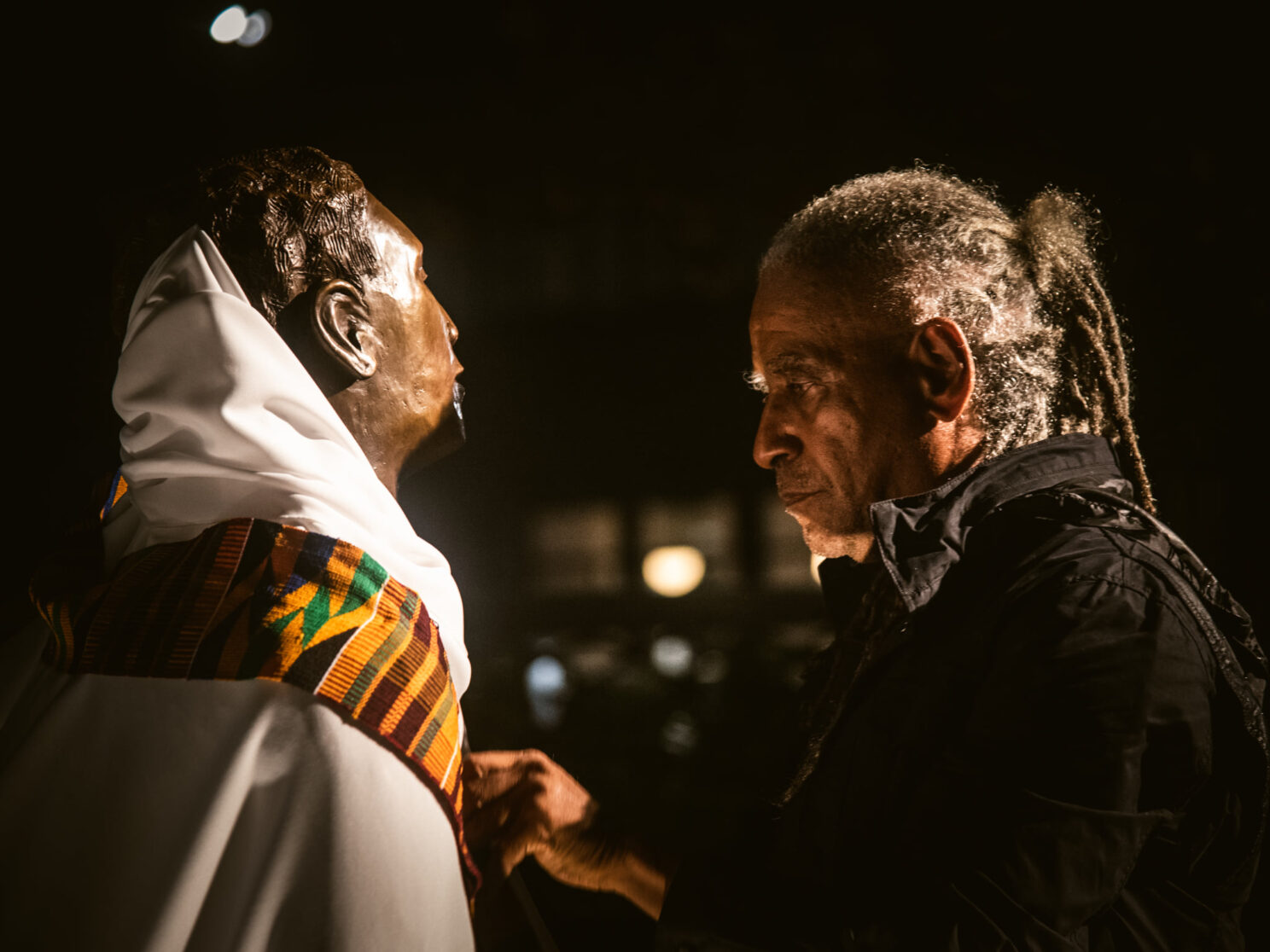

Lead Artist Jerome Meadows composed the poem Going Beyond for the Memorial. Dedication ceremony images are courtesy of the Ed Johnson Memorial Project.
